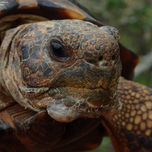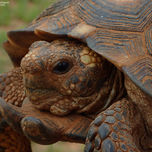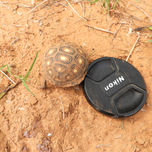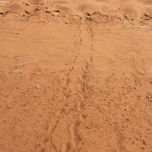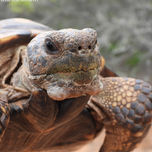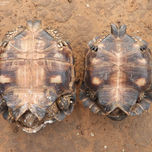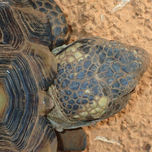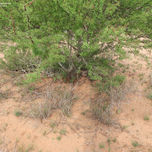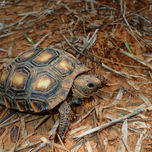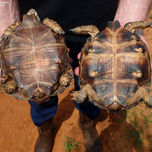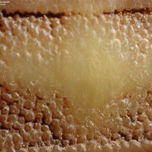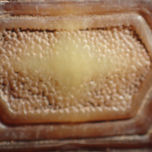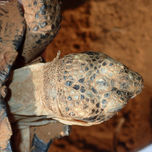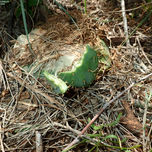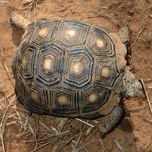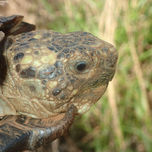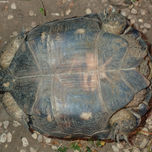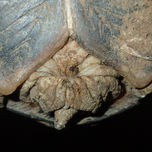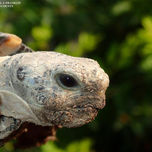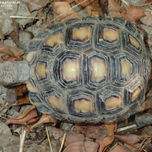

TEXAS TORTOISE (Gopherus berlandieri), (AGASSIZ, 1857)
This is the smallest North American tortoise and the only tortoise native to Texas. Adults reach a shell length up to 8.75 inches (22 cm). The carapace is is rounded in dorsal perspective it is almost as wide as it is long and ranges in coloration from dark brown with beige highlights appearing on the center of the costal and vertebral scutes and on the edges of the marginal scutes. The plastron is colored similarly to the carapace with dark brown to black present on the edge of the plastral scutes distal to the mid-line. The head, neck and limbs are can range in coloration from tan to dark brown with some specimens exhibiting black scales on the front of the limbs and bottom of the feet. A pair of protruding chin glands are found on the lower jaws of adult males. The chin glands will exude a fatty substance that the tortoises can smell. The full function of these glands have not yet been documented.
Within the United States, the Texas tortoise has a geographic distribution confined to southern Texas from south of Del Rio and San Antonio. In Mexico the species is distributed from eastern Coahuila, Nuevo Leon, Tamaulipas and northeastern San Luis Potosi. Within its range the Texas tortoise inhabits scrub forest, humid tropical zones and near desert situations with well drained soils.
Weather permitting, this species can be found active almost every month out of the year. Unlike other North American tortoises, the Texas tortoise does not excavate a burrow. Instead it may use a pre-dug mammal burrow or prepare a pallet in which to reside. Tortoise pallets are created by the tortoise using its forelimbs, gular scute and edges of the shell to scrape away an area near the base of a small tree, shrub or clump of cacti. The pallet has an upwards slope from its vegetative base. The largest pallet ever documented was one that measured 4 inches (10 cm) in depth and 13 inches (33 cm) in length. (Auffenberg and Weaver, 1969).
Mature males can be differentiated from females by having a cloacal opening that extends just beyond the carapacial rim, a concave plastron and an elongated and forked gular scute that is used during bouts of territorial jousting between males. Females dig a shallow nest site in sandy soil no more than 3 inches (7.6 cm) deep and deposits 1-3 eggs.
Literature Cited:
Auffenberg, W., and W. G. Weaver, Jr. 1969. Gopherus berlandieri in southeastern Texas. Bull. Florida. St. Mus. Biol. Sci. 13: 141-203

Green represents county records based upon released pets found in the wild.
